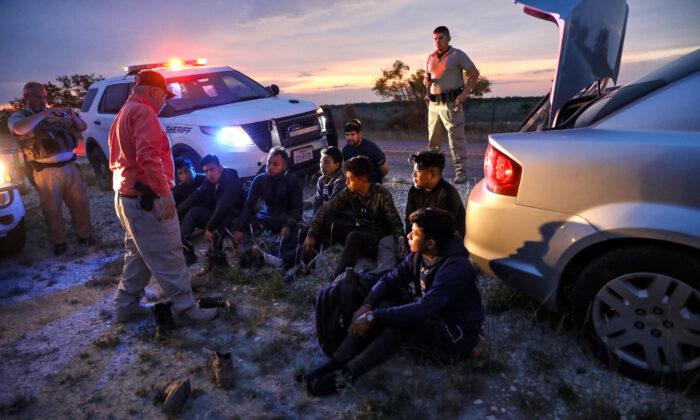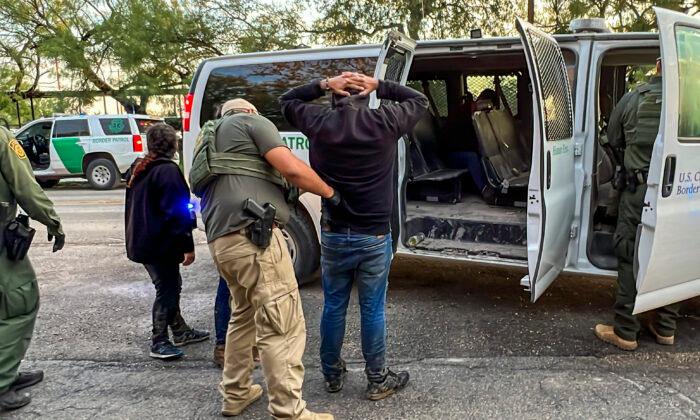WASHINGTON—Although the wall is dominating the final breaths of 2018, it was the migrant caravans and the record number of family units crossing the border that towered over border security this year.
As the pace of illegal activity along the southwest border increased, Congress slowly ground to a halt on finding solutions, and federal judges took a blowtorch to all of President Donald Trump’s attempts to patch holes in the system.
This year, tens of thousands of Central Americans paid smugglers to journey north and enter the United States as asylum-seekers. Thousands more joined caravans in April and in October.
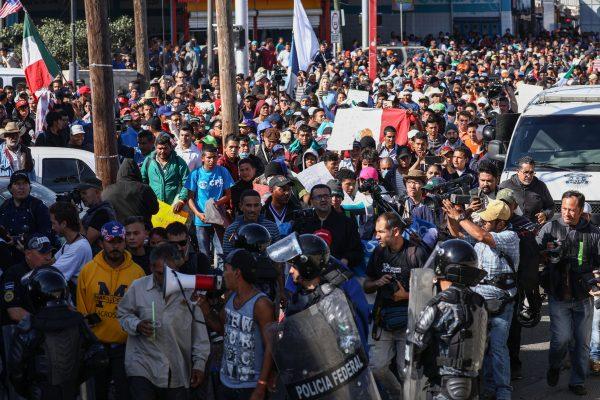
Driving the increases were family units, which consist of at least one child and one adult.
The administration tried several methods to stem the flow, explaining that while most asylum claims are bogus, the system is being used as an effective way to gain access to the United States and disappear once inside the country.
Eighty-nine percent of asylum-seekers from Central America pass an initial screening at the border when they claim fear of returning to their country. If a child is involved, as is the case for more than 60,000 crossings per month right now, the maximum detention stay for both parent and child is 20 days—a timeframe that renders an asylum adjudication impossible.
The rest remain in the wind.
Hoping Something Sticks
Absent congressional action to close the loopholes that are allowing economic migrants and those who want to join family members to enter anytime, the administration has tried several approaches to reduce the number of fake claims of asylum.The prosecutions forced the temporary separation of adults and children while an illegal entry case was being adjudicated. Officials also verified the familial relationship between the adult and the child, conducted a criminal background check, and dealt with any medical issues, including communicable diseases.
An uproar ensued; the administration was blamed by Democrats and some media for “ripping babies from mothers’ arms,” and it quickly walked the policy back.
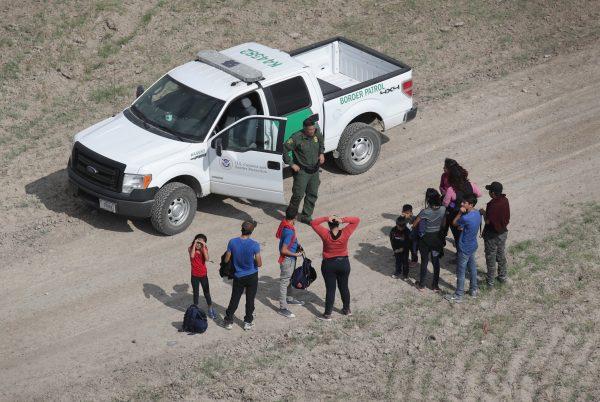
The definition has not changed. Asylum-seekers have always needed to prove that they have suffered past persecution or have a well-founded fear of future persecution in their home country because of their race, religion, nationality, political opinion, or membership in a particular social group.
“It is not enough to simply show that the government has difficulty controlling the behavior or that certain populations are more likely to be victims of crime,” the Department of Homeland Security stated in June.
U.S. District Judge Jon Tigar blocked Trump’s proclamation on Nov. 20, and on Dec. 19, the Supreme Court declined to intervene until the case completes its journey through the lower courts.
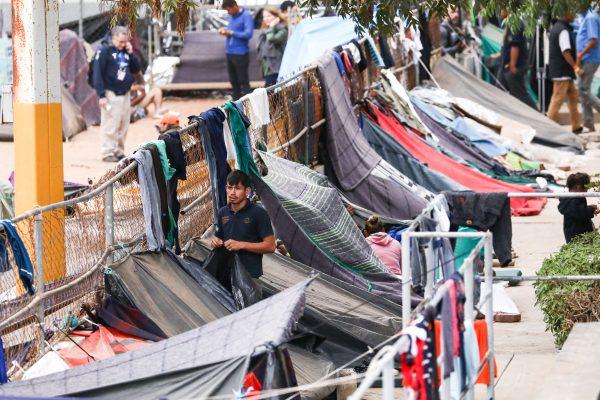
Remain in Mexico Deal
But, in what may be a breakthrough in controlling undeserving asylum claims, Department of Homeland Secretary Kirstjen Nielsen announced on Dec. 20 that asylum-seekers may now be returned to Mexico for the duration of their immigration proceedings.“If they are granted asylum by a U.S. judge, they will be welcomed into America. If they are not, they will be removed to their home countries,” Nielsen said. “‘Catch and release’ will be replaced with ‘catch and return.’ This will also allow us to focus more attention on those who are actually fleeing persecution.”
The agreement seems to be more of a handshake at this point, but it’s the right thing for Mexico to do, said Jessica Vaughan, director of policy for Center for Immigration Studies.
“What is really motivating Mexico [to agree] is the fact that this is becoming their problem, too. That the United States is not just accepting people into the country,” she said. “Politically, no Mexican president wants to be seen as doing the bidding of the United States, but this is really bigger than that—this is a problem for Mexico, too.”
Expectations for 2019
“If 2018 was the year of the caravan, then the Supreme Court is going to play the lead role in 2019,” Vaughan said. “Nothing is going to happen in Congress. Everything that the administration tries to do is going to be subject to a lawsuit and possibly enjoined.”
Vaughan predicts the House Democrats will pass some kind of amnesty deal, most likely for recipients of Deferred Action for Childhood Arrivals (DACA).
“Some big amnesty that will go nowhere in the Senate,” she said. “But they want to do that for their base. Because they think that benefits them politically and they want to get the Republicans on record as opposing an amnesty.”
And she predicts that Democrats will look to cut funding for Immigration and Customs Enforcement (ICE), detention centers, and “all kinds of enforcement programs. And then the Senate will put it back in.”
She said that the Remain in Mexico policy might get challenged in court and that it’s not a complete solution anyway. “It can be overturned by the next president, or dropped by Mexico, or something—there are things that can go wrong with it,” she said. “It’s still dysfunctional if all these people end up getting approved for asylum anyway—if the definitions are not tightened up to the language in the law. And it’s still dysfunctional if we can’t figure out a way to adjudicate these cases more quickly.”

The Broader Picture
Trevor Loudon, an expert on communism and a contributor to The Epoch Times, agrees that the battle in 2019 will largely shift from Congress to the judiciary.But “the real battle is for voting numbers,” Loudon said. Democrats would gain an electoral advantage through millions of illegal alien votes, he said, “versus the patriots’ desire for national sovereignty.”
“That’s what it comes down to,” he said.
“And you’ve got a complicating factor in there—you’ve got some elements of the right, the Chamber of Commerce types, who all they care about is open borders so they can get an unending supply of cheap labor.”
He predicts 2019 will bring a real confrontation.
“This is going to be really, really, tense confrontation,” he said. “And we’re going to see an amp up in the aggravation. I think the wall will get started, and I think the left will do everything they can to stop it.”
Loudon said he also expects “a civil war” in the Democratic Party between the new progressives and the old guard.
“This isn’t socialist versus liberal. This is communist versus socialists,” he said. “They’re going to be preoccupied. They’re not going to get a lot done because President Trump is going to veto it anyway, but they’re going to push the most extreme, left-wing, progressive measures you could possibly think of.
“And the judiciary is chock-full of socialist and open-border Marxists, so they will do whatever they can.”



